Welcome to Part One of Palestinian Gandhi on Trial, Talking Human Rights’ special series exploring the life, work, and ongoing legal predicament of Palestinian activist, Issa Amro. Issa has been called the Gandhi of Palestine for his work to promote and organize strategic non-violence among Palestinians and Israelis.
Issa has also been identified increasingly over the years as a targeted activist, as he is frequently detained, arrested, and harassed for his work in the occupied territories.
As of the recording of this episode in September 2019, Issa is facing trial before an Israeli military court and simultaneously before a Palestinian Authority court for his activities as a non-violent activist. We will discuss the cases at length in this series, but first:
This episode, Part One, explores the context necessary to understand Issa’s case. Namely, it explores the context of the Israeli military occupation of the West Bank. Beginning at absolute square one, this episode seeks to paint a picture for you of what the occupation is, how it works, and its daily impacts on those living within the West Bank. We invite you to follow along in our visual guide below.
Resources
The Occupation of the West Bank -- A Visual Guide
If you are traveling in the West Bank, you will see numerous watchtowers, a constant reminder that Palestinians are under military occupation and that they are under constant surveillance.
You will see watchtowers as you are traveling from town to town…
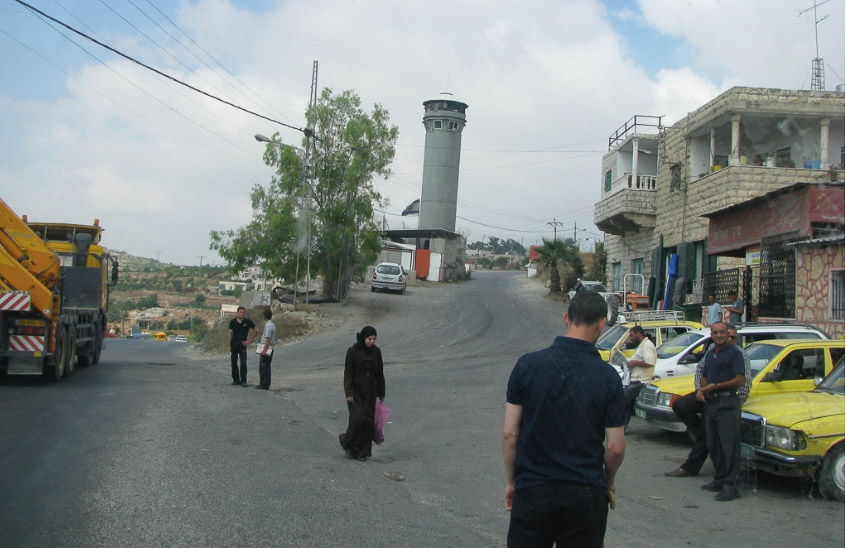
You will see watchtowers overlooking refugee camps…
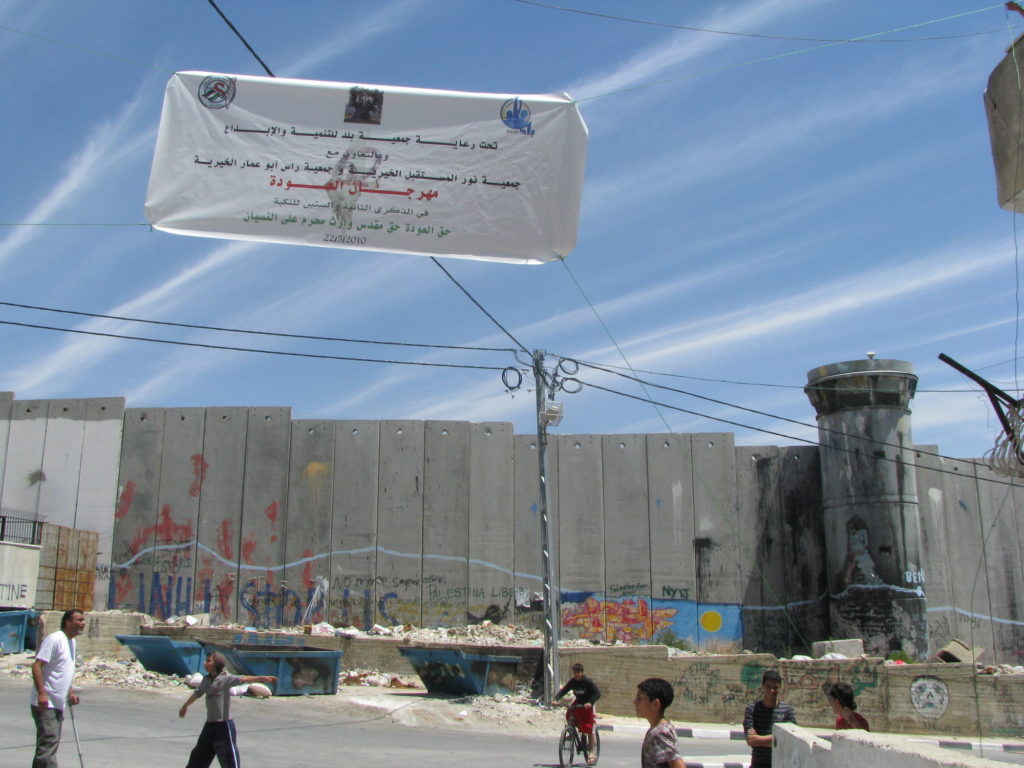
You will see watchtowers overlooking the countryside…
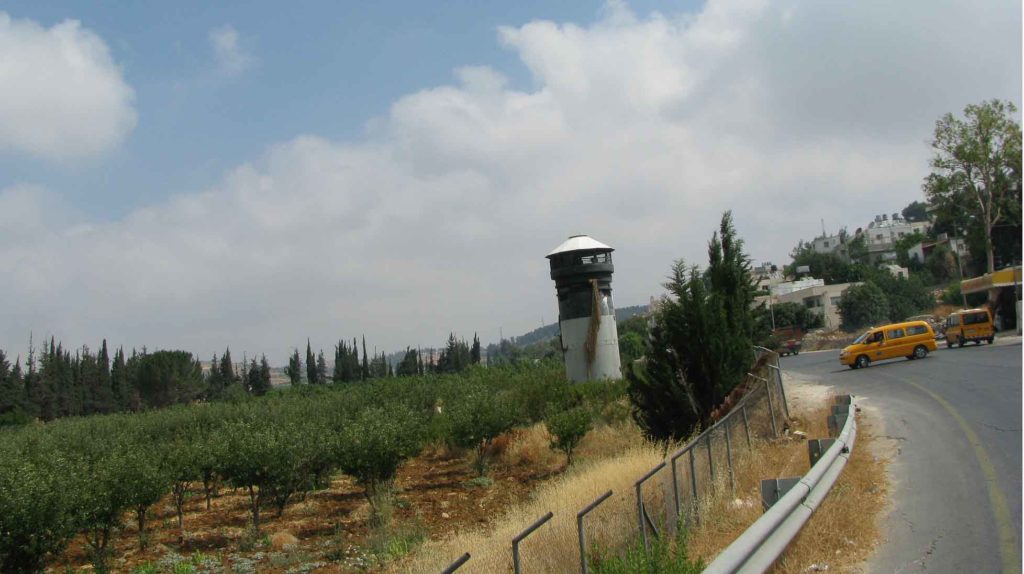
In the city of Hebron, you will see watchtowers built on top of people’s houses…
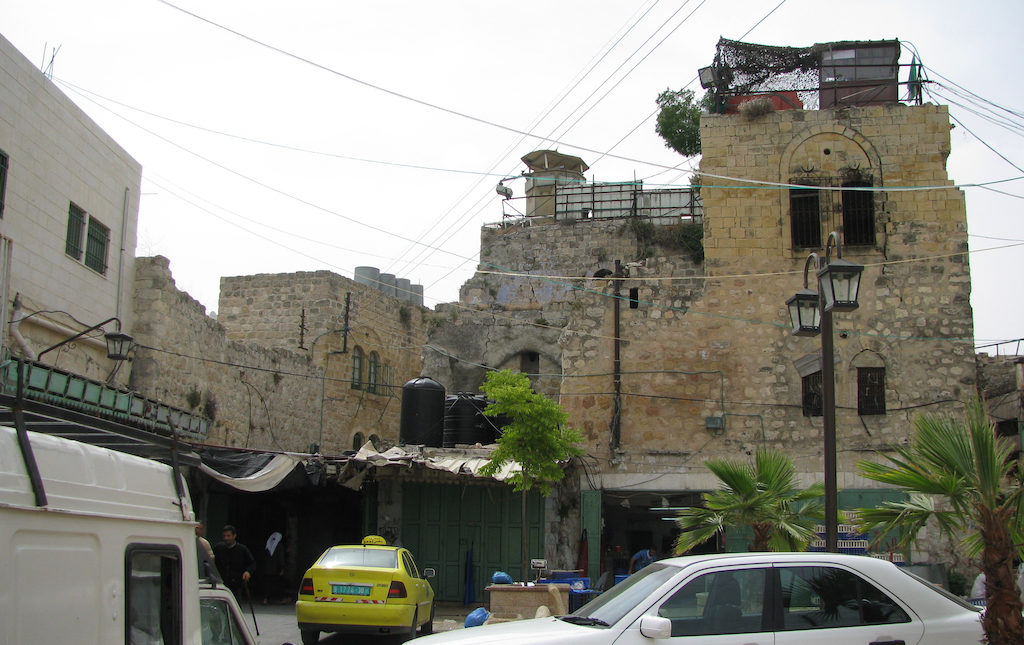
You will see watchtowers in the middle of pedestrian zones…
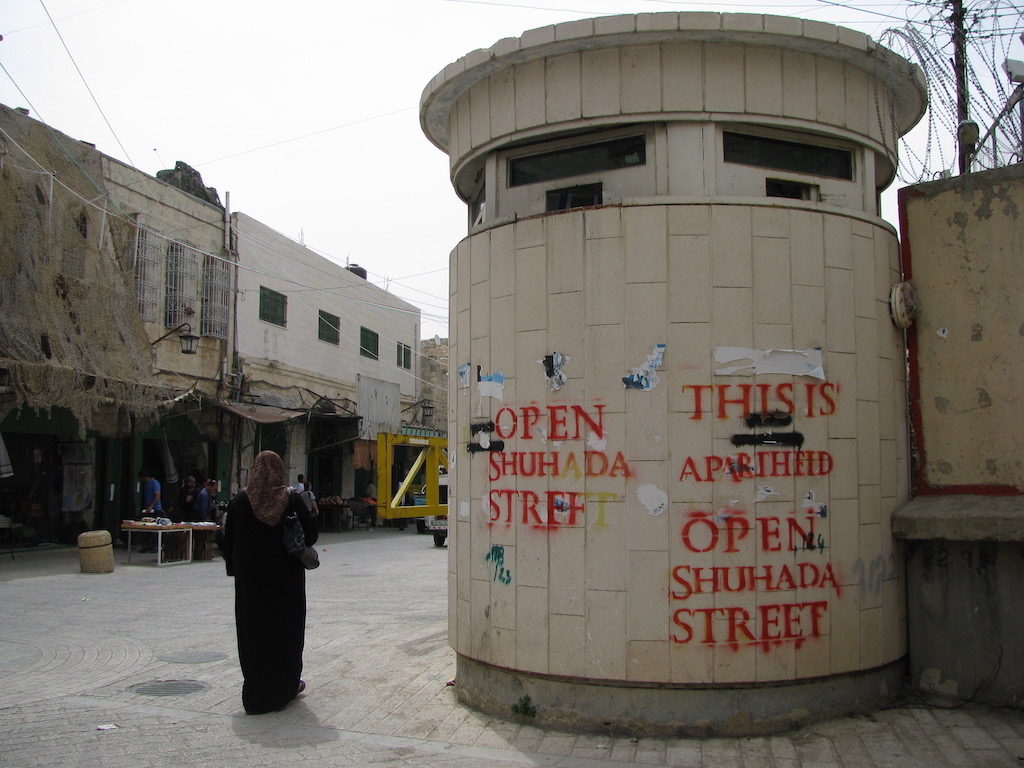
(We will discuss the graffiti on this watchtower in Part Two…)
Traveling around in the West Bank, you will frequently encounter military checkpoints where you must stop, present your papers, and sometimes face questioning about where you are going and why.
For instance, you may pass through this checkpoint, which divides Bethlehem from Jerusalem…
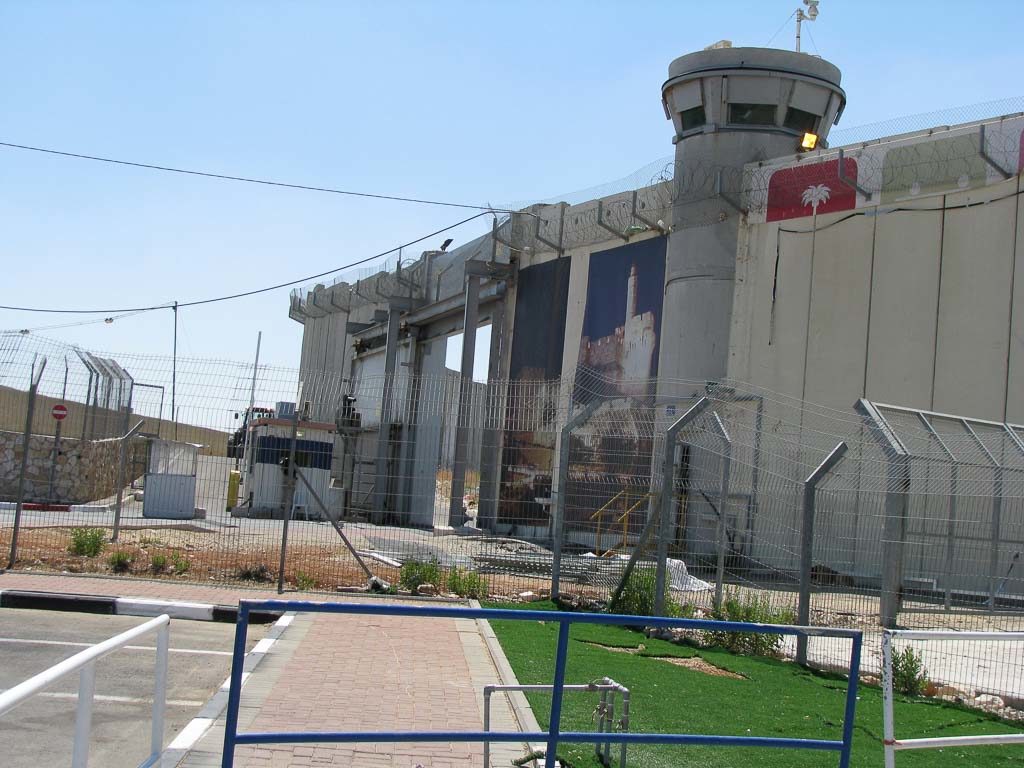
If you are a passenger in a car, you may be told to get out and cross the checkpoint on foot…
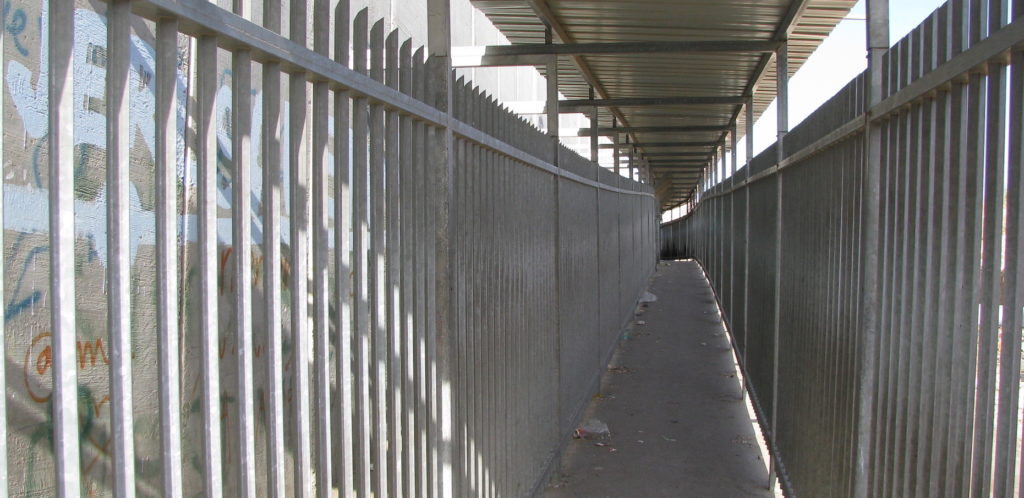
You can spend hours waiting at a checkpoint, waiting in the cages…
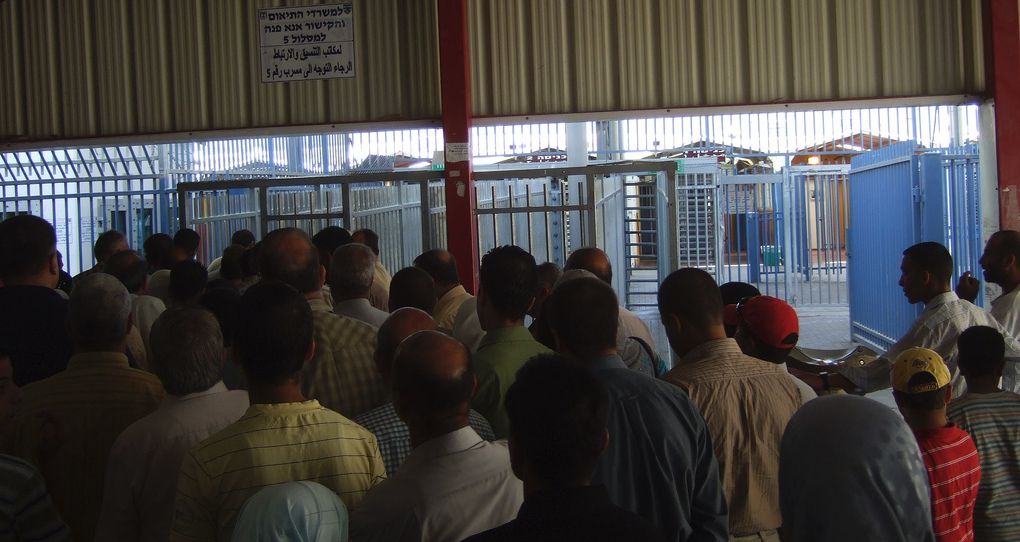
You will also come upon checkpoints as you are traveling from town to town within the West Bank…
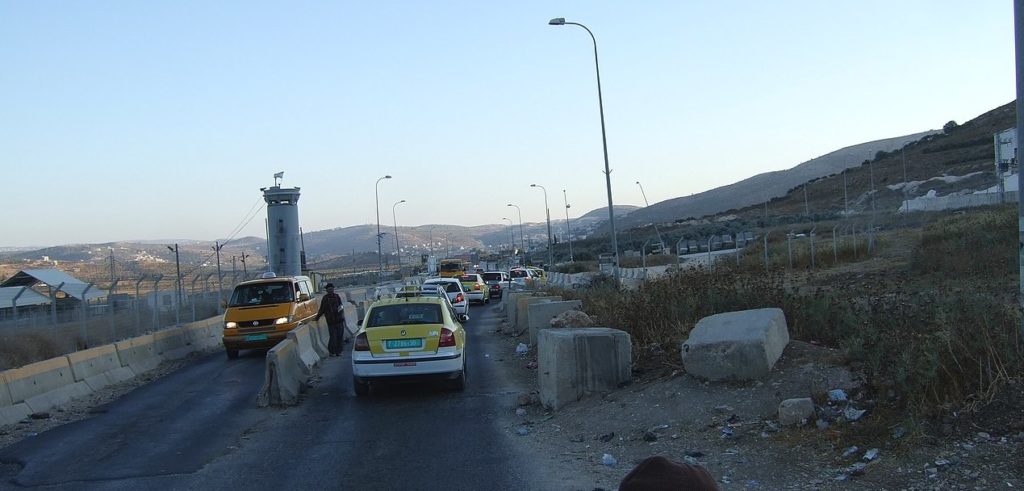
In the city of Hebron, which features heavily in this podcast series, you will find checkpoints within a city…
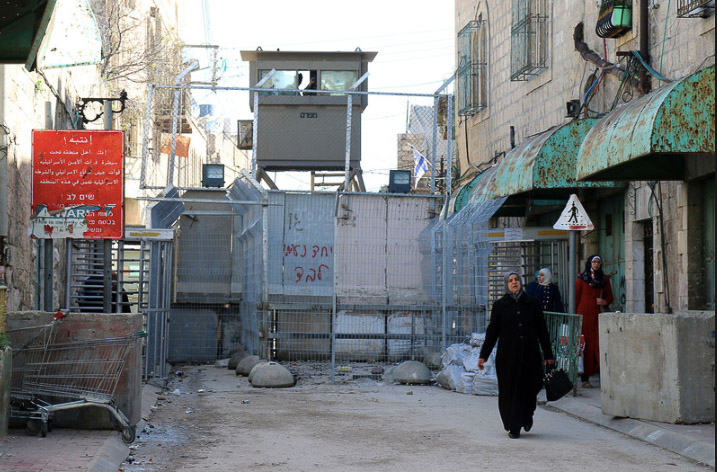
The schoolchildren of Hebron must pass through checkpoints daily on their way to and from school.
A checkpoint in Hebron could take many forms. The one below is simply a metal detector that is attached to a low gate placed there to allow the vehicles of the occupying military to pass through. On some days, there are soldiers monitoring this checkpoints. On other days, there are no soldiers in sight.
In the photo below, you can see a soldier in the upper right corner, standing on the rooftop with a camera affixed permanently to conduct surveillance.
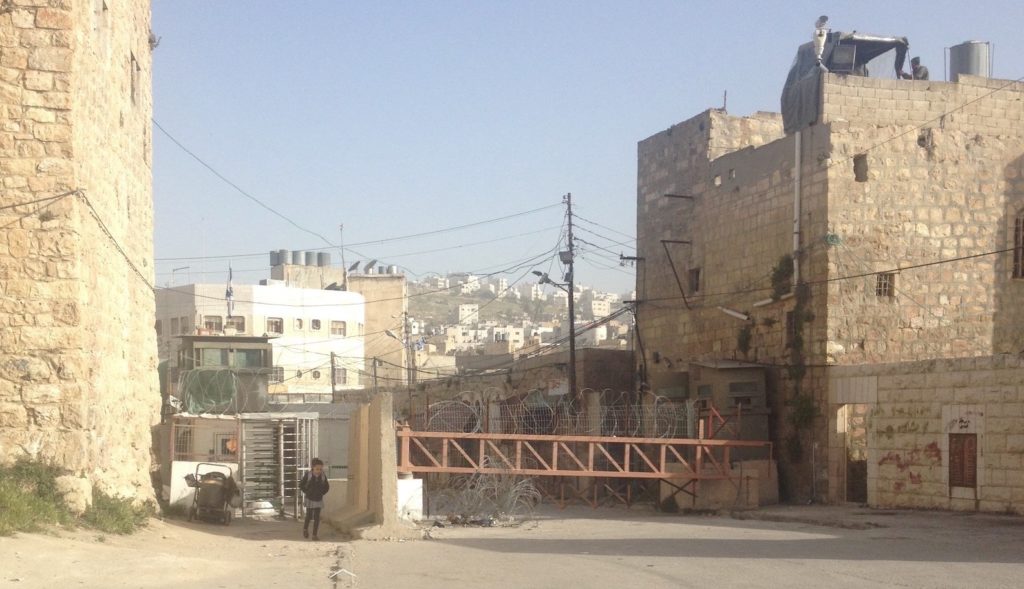
In the West Bank, as part of the military occupation, you will encounter soldiers on a daily basis.
In rural parts of the West Bank, which are designated as “Area C,” soldiers often appear while people are farming their land, or grazing their sheep. We will discuss Area C further in this series, but for now you can note that Area C makes up over 60% of the West Bank and is where the Israeli military exercises complete control over both military and civilian affairs. There is no Palestinian Authority presence in Area C, which means there is no Palestinian Authority presence in most of the West Bank.
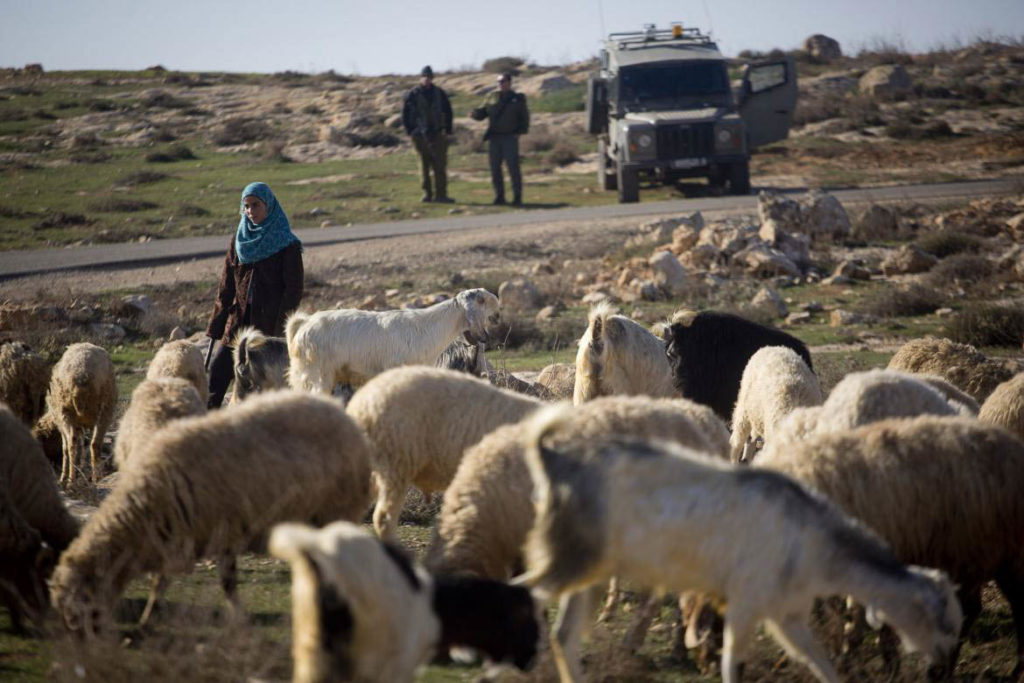
In the city of Hebron, which features heavily in this series, soldiers can be seen walking the streets on a daily basis.
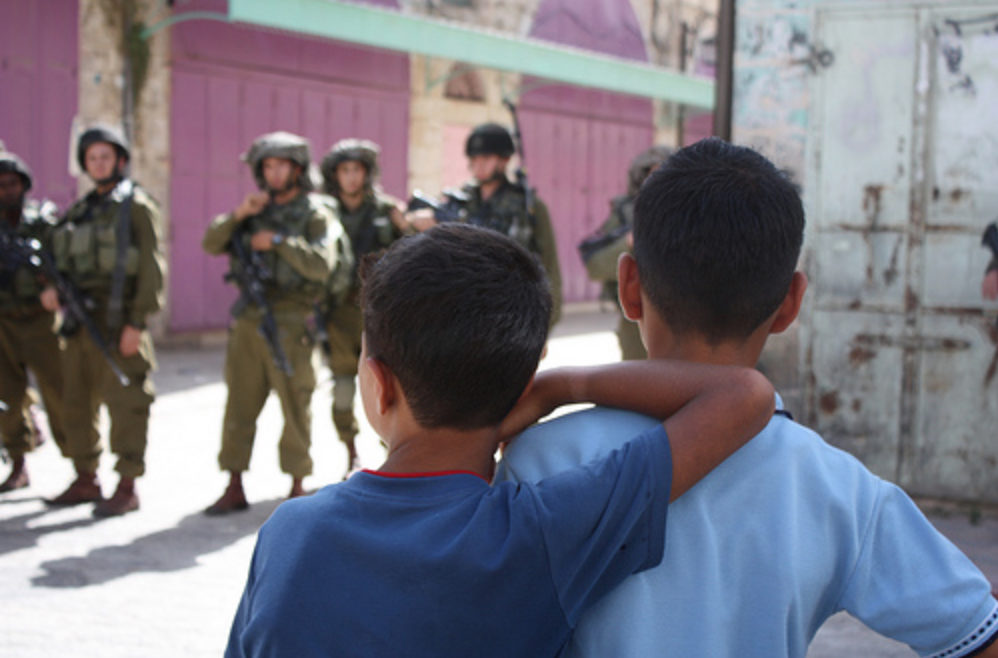
The presence of soldiers makes Hebron look like a war zone, but it is not a war zone.
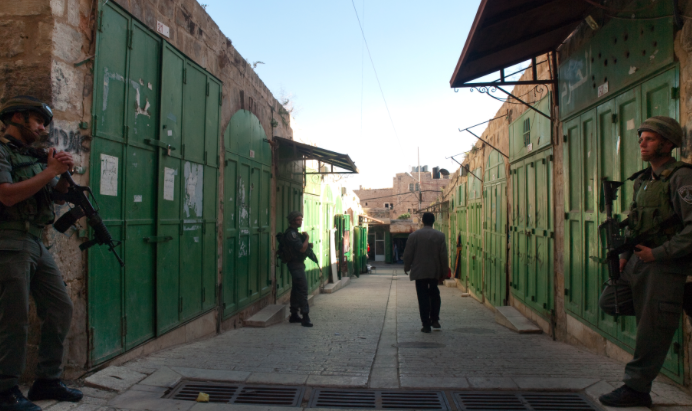
You may have heard the term “closure” in relation to the occupation and not known quite what this meant. A closure can be many things.
Here, a group of activists from the group Ta’ayush clear a number of boulders that have been placed across a road in a rural area of the West Bank called the South Hebron Hills. These boulders, which are put in place to prevent Palestinians from driving along the roads, form one type of closure, or “movement barrier.”
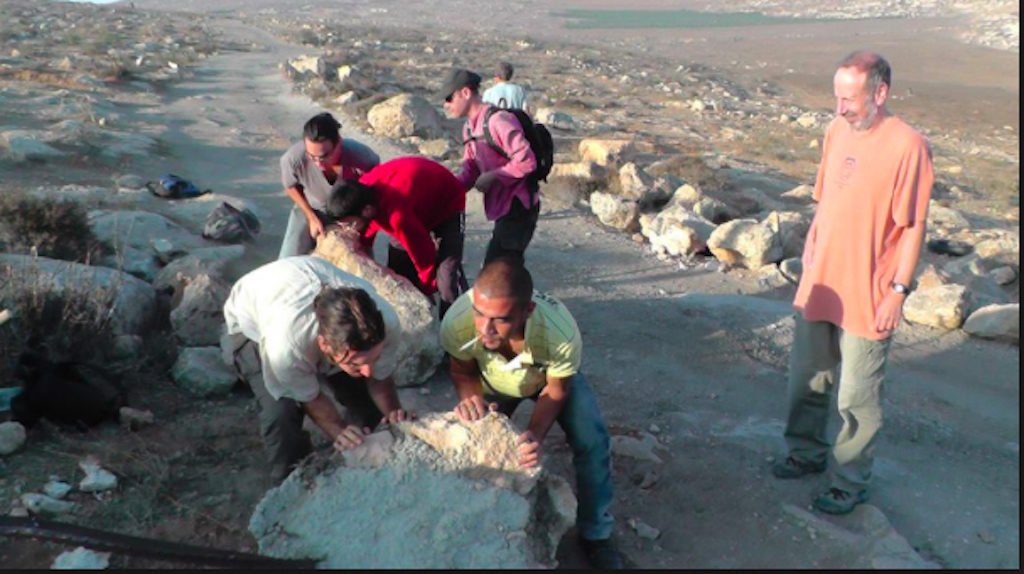
The city of Hebron is full of closures. Some have been in place for years…
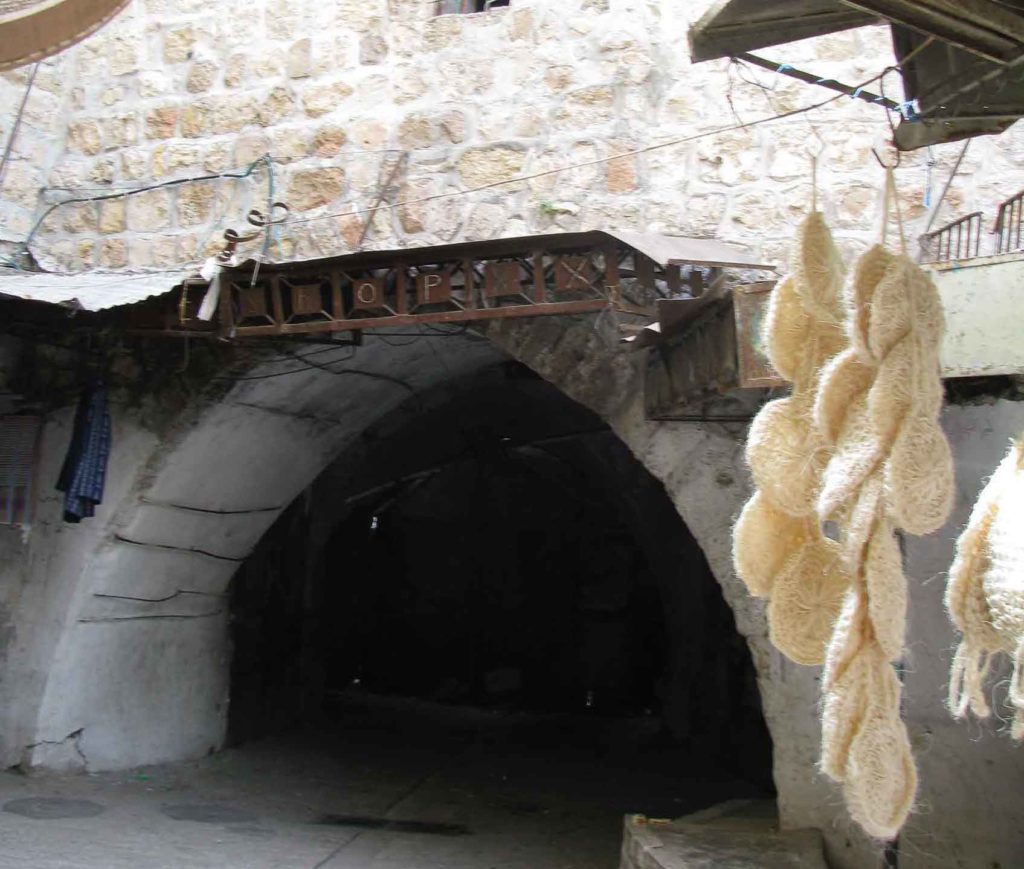
You will also see, in Hebron, closures made out of piles of razor wire. It may appear easy enough to remove such a closure, but remember that this is an area under severe military lockdown with thousands of soldiers marching down the streets, so you would not remove this closure.
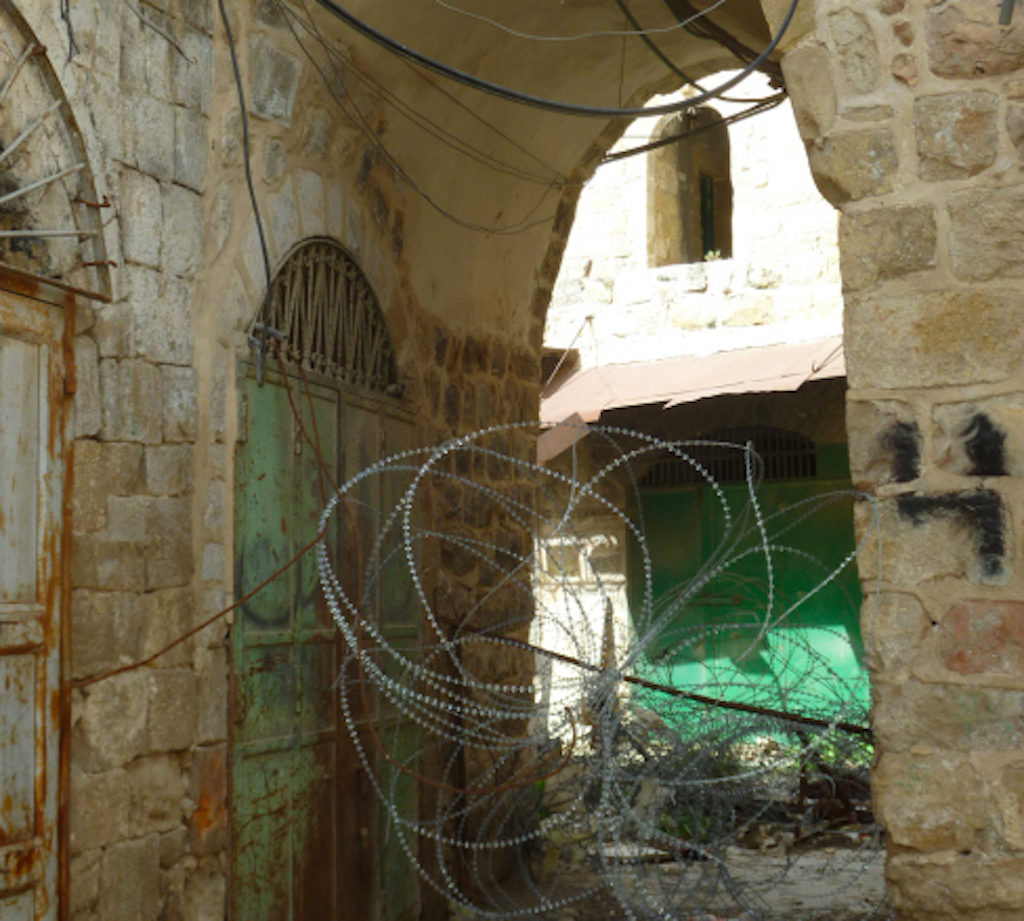
In Hebron, you will see many closures like this one, which block people from accessing the city’s main road, Shuhada Street.
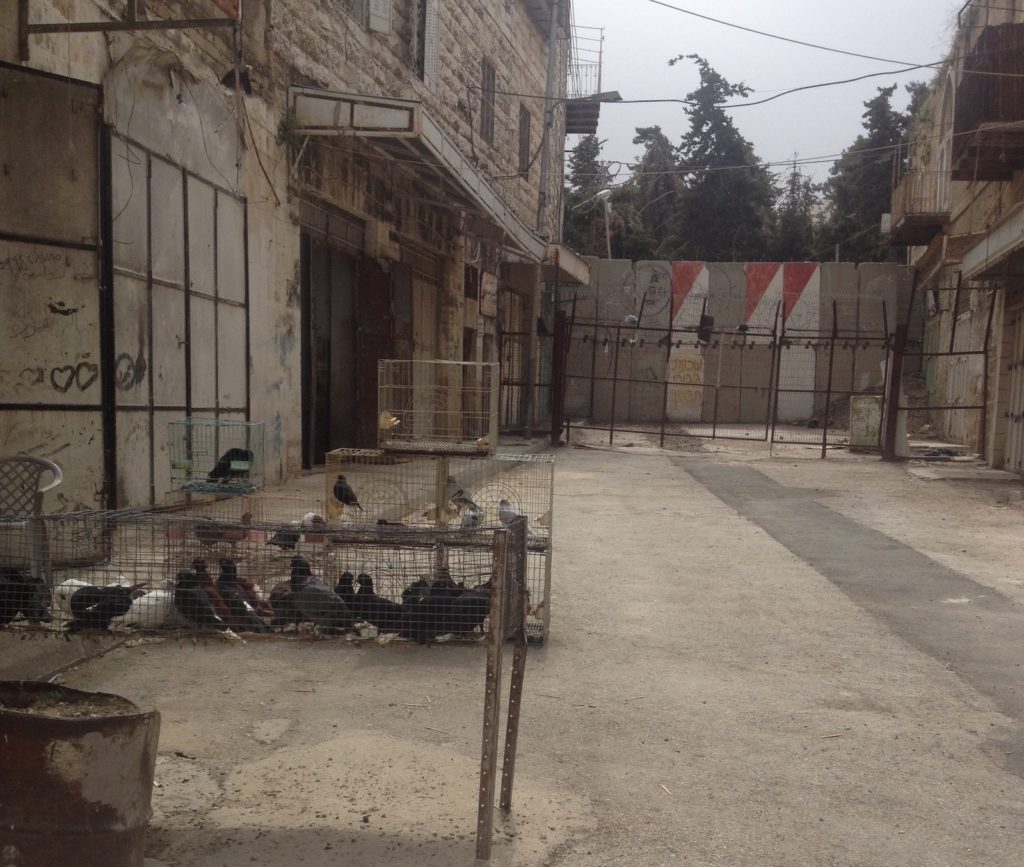
You will see closures like this one, also along Shuhada Street.
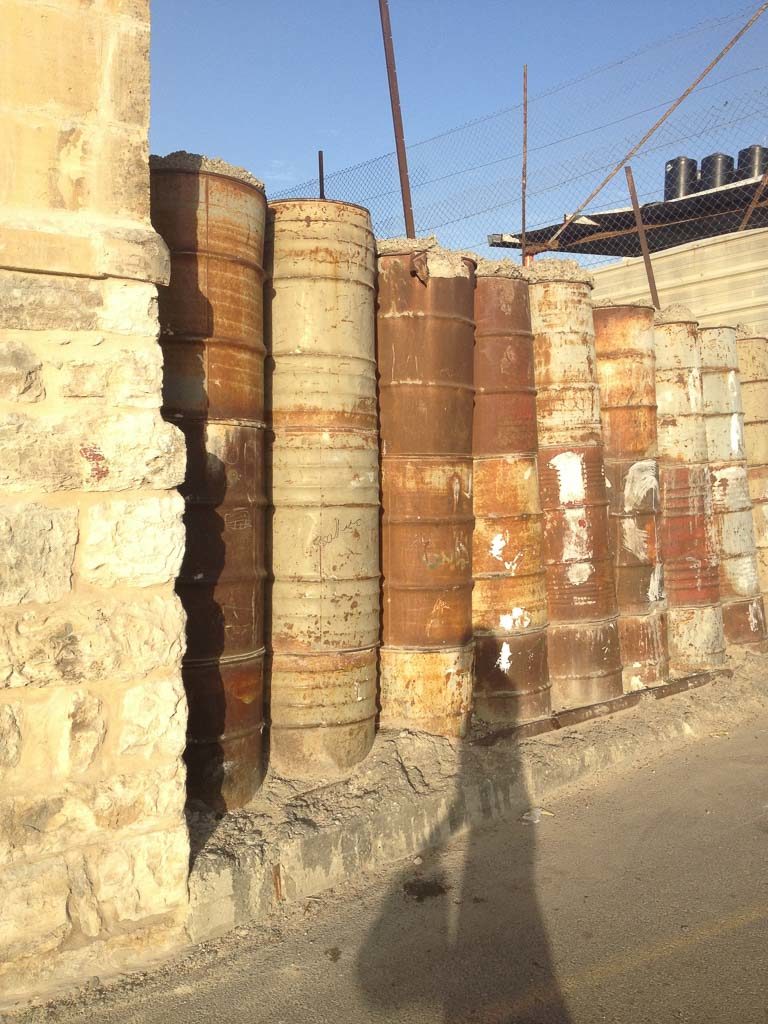
You will also see this barrier, or a barrier like this, lining Shuhada Street itself. Palestinians are only allowed to walk on parts of the street and are not allowed to drive along it. Barriers such as this are constantly moving and changing.
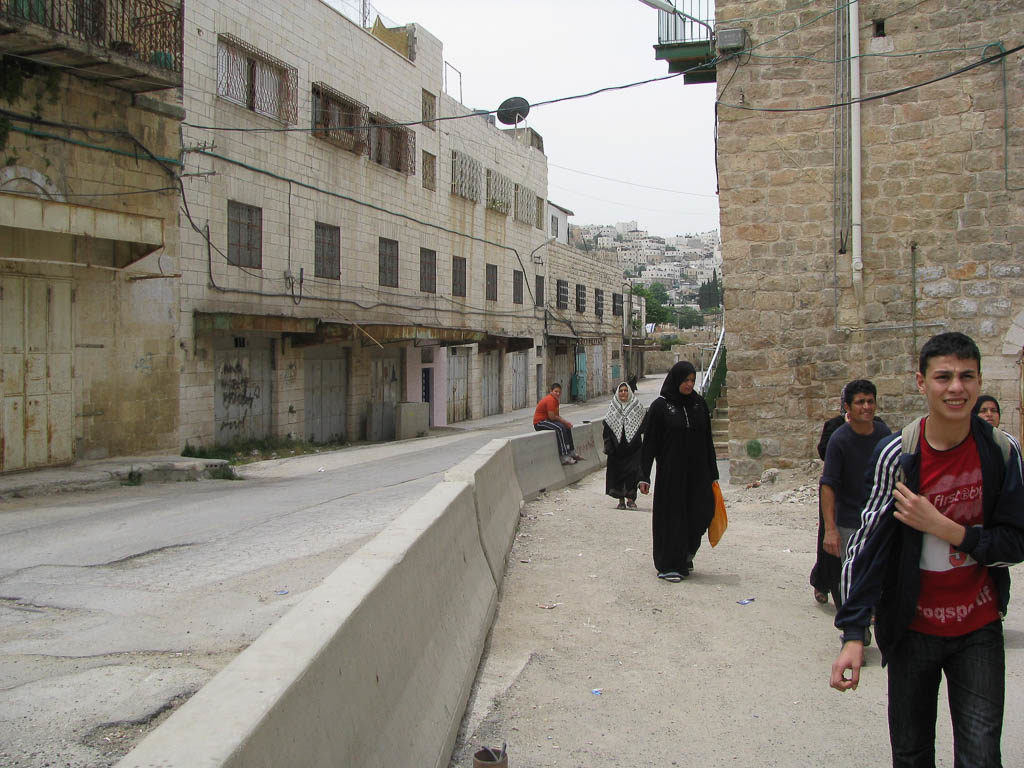
As we will discuss more in the next episode, closures can block access to entire neighborhoods, forcing residents to move out. A closure can also refer to a business, a home, or even a school has been forcibly shut down by the soldiers.
Below are a few photos from a morning when soldiers entered a boy’s school in Hebron.
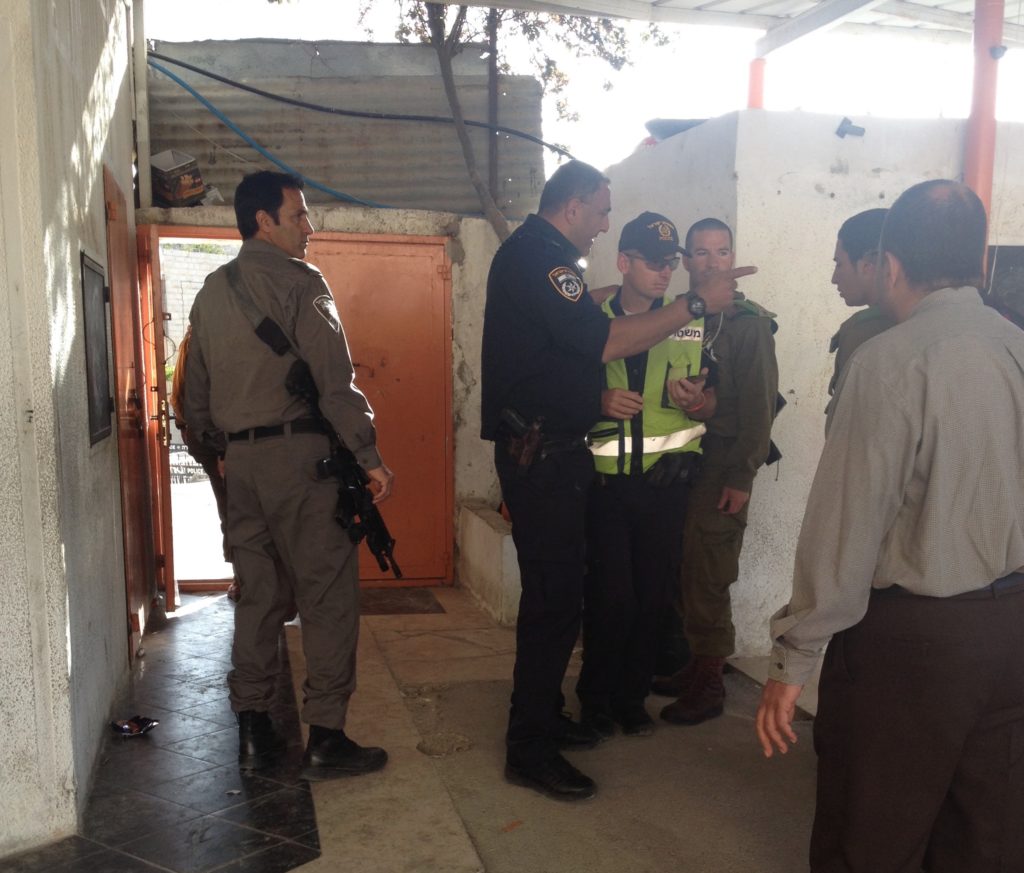
The soldiers later returned and closed the school for the day.
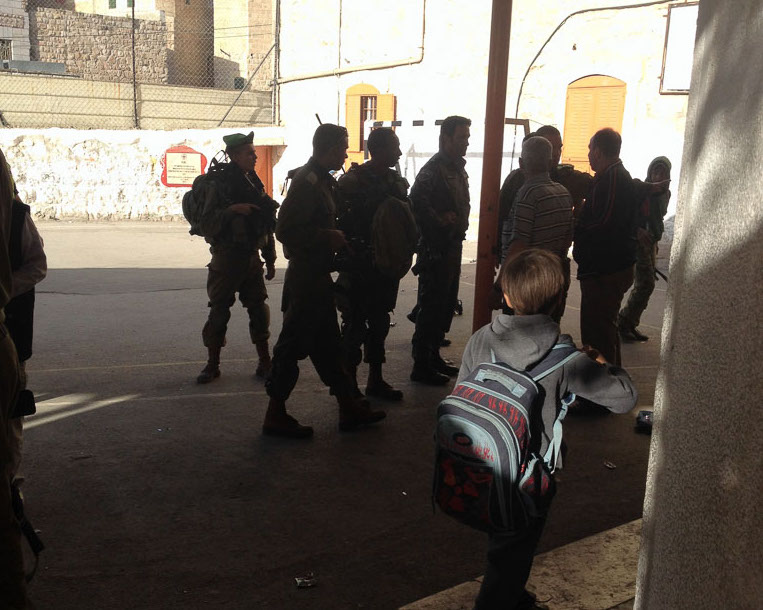
In this Episode...
Heather Roberson Gaston

Talking Human Rights host and creator Heather Roberson Gaston is a writer, adviser, and educator in the field of human rights. She holds an undergraduate degree in Peace and Conflict Studies from the University of California at Berkeley; a Master’s in Human Rights from Columbia University; and a Certificate in the Advanced Study of Central and Eastern Europe from the Harriman Institute, also at Columbia University.
Heather co-authored Macedonia: What Does it Take to Stop a War? a graphic novel based on an early solo research trip to the Balkans as an undergraduate. She is now working on a narrative work exploring the many lives and deaths of the Israeli-Palestinian peace movement, for which she spent the better part of a year living and working in Israel and the West Bank.
Issa Amro
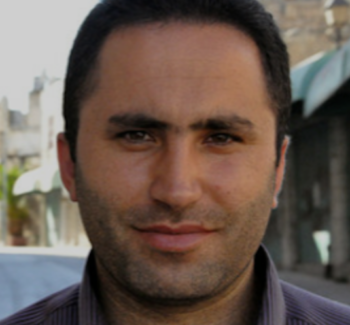
Issa Amro is a lead non-violence activist who lives and works in the city of Hebron, Palestine. Issa has championed non-violent struggle since the Second Intifada when he found his university shuttered by the occupying Israeli military. This closure prompted Issa to organize his fellow students, as well as like-minded Israelis, until the university was reopened and the students were able to return to school.
Issa has been named a top human rights defender by more organizations than we can count. He has organized his local community for the past fifteen years, and has spoken all over the world about the importance of non-violent struggle and about non-violent tactics. You can find him on Twitter where his handle is @Issaamro.
